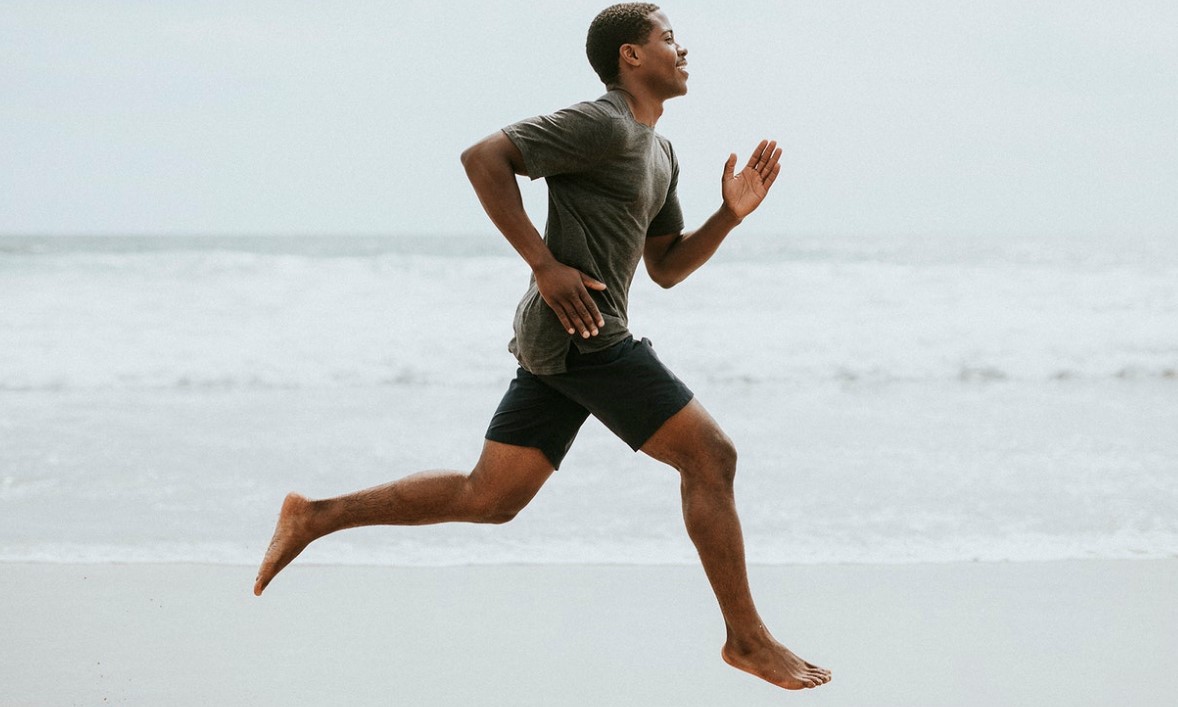Last Updated on January 30, 2023 by admin
When it comes to running, most people are in a constant pursuit to improve their speed. Even long-distance runners ultimately want to improve a marathon time, and sprint training can ultimately help in that regard.
But sprint training is not reserved only for runners: athletes in all sports can benefit from some sprint training, whether they are hitting the courts or cycling for speed, or even swimming laps.
The benefits of sprint training are numerous when it comes to overall fitness and health, so anyone can see the positive effects of this kind of workout.
What Is Sprint Training?
Sprint training employs short bursts of sprinting as a cardiovascular workout that burns fat and builds muscle; sprint training is preferred by many coaches and trainers over longer walks or jogging for extended periods.
This is not to say that a brisk walk or jog is not effective exercise, and this is especially true in cases where someone is obese or facing other health challenges. Walking may be the springboard to weight loss and the eventual ability to run or participate in other cardio activities.
Sprinting is certainly not a “starting point” for everyone: it requires a participant who is already in generally good shape with a healthy level of physical fitness.
Sprint training can take an athlete from good to great, provided the athlete uses the appropriate increments of exercise and rest to avoid injury.
What Kinds of Athletes Use Sprint Training?
The first athletes that come to mind when you think of sprint training are likely those in track and field. While it is true this is a sport that utilizes a faster sprint more than almost any other, you will also see sprint training everywhere, from hockey to swimming.
Any athlete whose sport requires an extreme level of physical fitness will benefit from sprint training. This kind of training speaks directly to a high-calorie burn and an increase in heart health. Regular sprint training can improve body composition, work against the effects of aging, and even reduce stress. The endorphins associated with a “sprinters high” make the actual sprint’s rigors worth it for many.
Sprint training and speed work will increase an individual’s metabolism over time, and athletes who use it also love th3e fact that it can be done anywhere. There’s no fancy equipment needed for sprint training: it can be done whether you are away on business travel or just spending the weekend in your own neighborhood.
I am Not a Runner: Can I still Try Sprint Training?
Sprint training is NOT limited to people who identify as “runners.” Let’s face it: even some top athletes hate running. It is not for everyone. Some avid runners love nothing more than a 10-miler on a beautiful Sunday morning, and some people would rather undergo a root canal than run ten miles on a weekend.
You do not have to be in the first camp to get involved in sprint or speed training. In fact, one of the best things about sprint training for those who hate running is the fact that it is done quickly.
For beginners, you may be sprinting in 20-30 second bursts; more advanced athletes will sprint for a few minutes. Either way, at least we are not talking an hour of running here!
Sprint training can be incorporated easily into your normal workout routine two to three times per week, and you can start with a small amount of sprinting and gradually work your way up as it becomes easier.

What Kind of Shoes Do I Need for Sprint Training?
The introduction of sprint training into your fitness routine does not mean you will suddenly need to shell out big bucks for fancy “sprinting shoes.” Most people can start with the training or running shoes they already own. The sprints are in short increments, so you are not necessarily disadvantaged by “regular” workout shoes.
Because sprint training is only one element of your workouts, which may also include everything from kickboxing classes to weightlifting to yoga, you should consider a good “all-around” training shoe that works for sprinting but also accommodates the other types of exercise you enjoy.
A lighter running shoe is best for sprinting and speed, but you still want enough support to ensure you minimize the risk of injury. We love the incredibly lightweight yet high performing Cloud X from On Running, and Adidas and Asics offer some great options as well.
How Can I Avoid Injuries in Sprint Training?
One of the most common causes of injury in sports is overexertion, and this is certainly the case when it comes to sprinting. If your greatest exertion in any given week is reaching for the remote, then you are not ready to sprint. Period.
It takes time to build up to sprint training, just as you learn to crawl before you walk. The best thing you can do to prep yourself for sprint training is to build up muscles in the lower half of your body with strength training and build up your endurance with cardio training.
Additionally, proper stretching and warmup techniques are critical with sprint training. Your best bet is to work with a professional coach or trainer who can devise a plan for warmup, sprints, and cooldown suited to your body type, skill, and fitness level.
The workout listed here is designed as a starting point for sprint training, assuming that the participant is already physically fit; if you have any concerns about adopting a new workout routine, you should first discuss them with your physician.

Eight Sprint Workouts to Make You Faster
If you are ready to tackle a new sprint routine, we have divided these workouts into three sections: sprints for the road, sprints for the track, and sprints for the treadmill. We love the “no excuses” element offered by the treadmill: even if it’s snowing out, you can still complete your sprint training.
Sprints for the Road
Sprint Training 1: 8 x 45 Seconds on Hills
Sprinting uphill is not for the faint of heart, and eight reps of 45-second hill work is a fantastic workout for anyone. Your rest will be the slow jog back down the hill after each rep.
Sprint Training 2: 12 x 60 Seconds on Roadway
This segment is designed to get your heart going and will leave you feeling energized. Rest for one minute in between each one-minute sprint.
Sprint Training 3: 6 x Choose Your Segment
You can pick a segment to run six times, with 90 seconds of rest in between. It could be the length of your driveway or the distance between your house and a neighbor’s.
Sprints for the Track
If you have access to a track, sprint training is made much easier with measurements laid out for you. Running the increments below, take rest periods of 60, 90, and 60 seconds, respectively, between the sprints.
If you are the parent of a student-athlete, take advantage of their practice times to multitask and squeeze your own training in at the same time. While your daughter is on the lacrosse field or your son is conditioning with a football team, use an empty track for some quick sprint training.
Sprint Training 4: 10 x 200 meters
Sprint Training 5: 8 x 400 meters
Sprint Training 6: 5 x 800 meters
Sprints for the Treadmill
For those who prefer gym workouts and want to maximize the use of treadmills, you can add sprint training into your routine to maximize the fees you already pay for equipment.
These last two workouts will boost your energy levels and, over time, help you increase your speed.
Sprint Training 7: 3-2-1 Ladder Run
Run as fast as you can on the treadmill for three segments: three minutes followed by two minutes followed by one minute, with 90-second breaks in between each sprint.
Sprint Training 8: 4 x 4 Run
A great way to challenge yourself, if you are advanced in your training and fitness levels, is to repeat a four-minute run four times on the treadmill, with 90-second rest periods in between. You will burn calories, build muscle, and reduce stress with this sprinting exercise. Not to mention the fact that with some good music to distract you and the camaraderie of classmates in the gym, you might just have fun while doing it!

